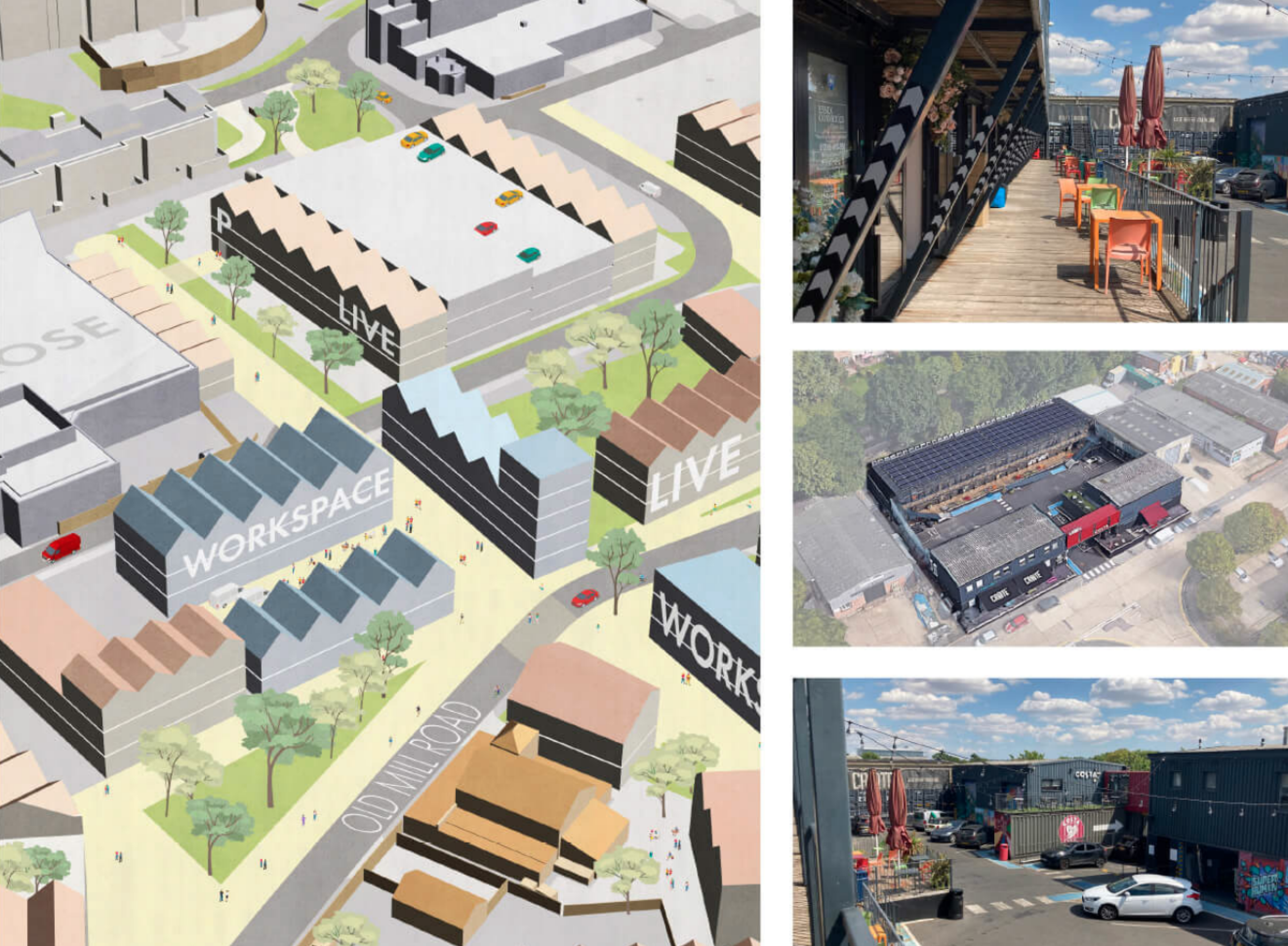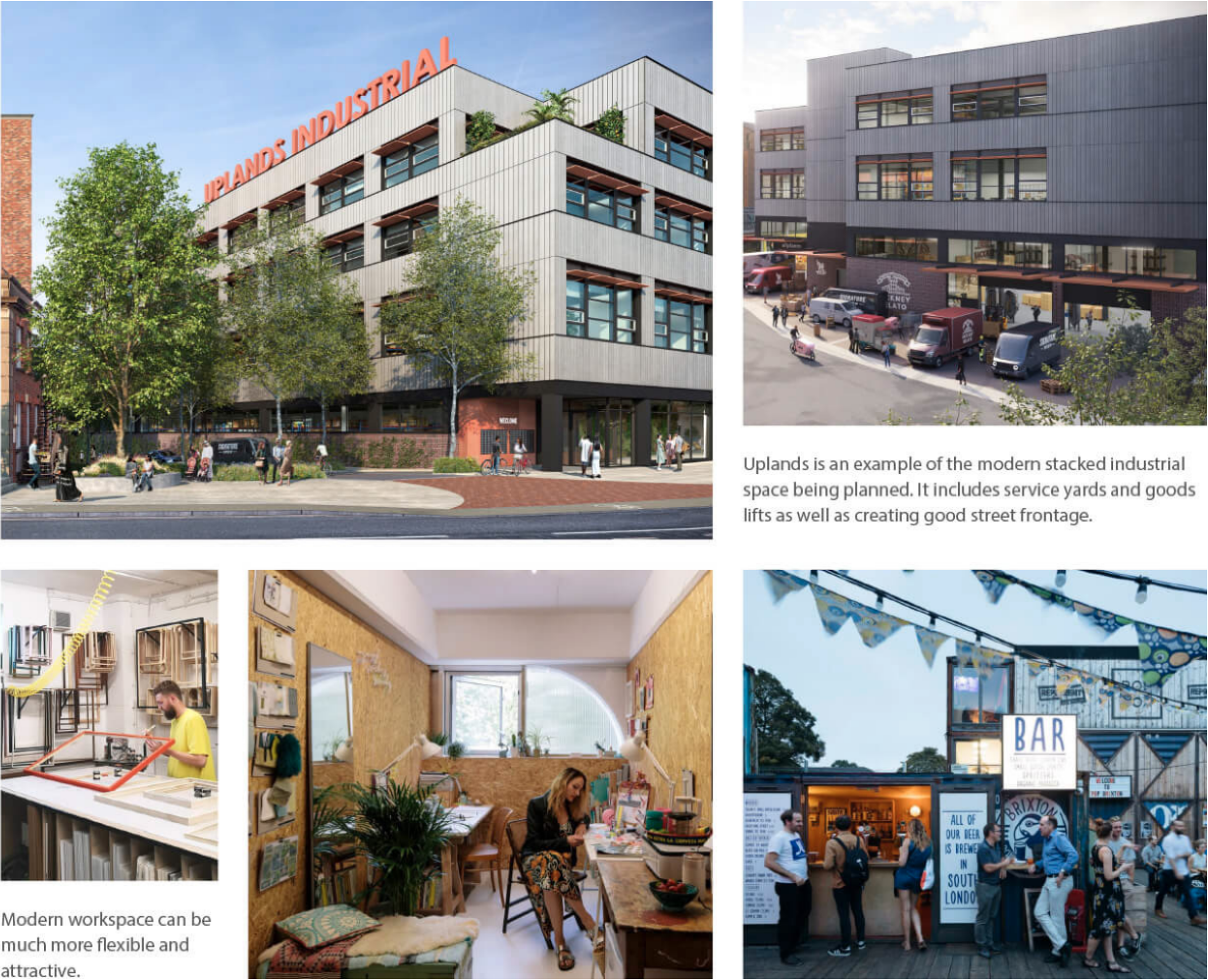The existing employment in the Wyndham Way area has been an important part of the public debate around the masterplan. Employment and workspace in and around the town centre has a significant role to play in making the town more economically sustainable, with local jobs supporting the high street and giving people more opportunities to work locally.
Over the last few years, the national trend has seen demand for employment and commercial space has remained high, making it attractive for land owners. In the short term, this makes the development of existing sites like Old Mill Road less likely as the space is in demand. Change is likely to be gradual and more likely to be about creative mixed use.
Workspace can be designed to be much better integrated into the wider town, helping to create good streets and be a positive part of Portishead. Lots of historic factory and mill buildings in our towns and cities do this very well and show how workspace could be better integrated into the town.

Crate is an example of innovative workspace for small businesses within an existing industrial estate. It includes a cafe and has become a centre for events and markets
New types of workspace
In recent years employment sites have tended to be low density and low rise. This contrasts with more historic developments like Victorian factories and warehouses which tended to be multi-storey. Stacked workspace for creative ‘maker-spaces’ is returning as a form of development, as is workspace as a ground floor use with housing above. Both options mean that more activity can be accommodated within a site, using land more efficiently and helping to support the town centre.
For any workspace as part of mixed use development, providing yard space which can accommodate vans and deliveries is an important factor, as are goods lifts to upper floors. Workspace units also typically need much bigger floor-to-ceiling heights than other uses.
When considering a mixed use scheme, it is important that workspace is designed so that factors such as noise, air quality and servicing do not affect nearby homes and create conflict. Careful design of service yards and bin stores as well as the orientation of entrances can play a big part in making mixed use areas successful.
